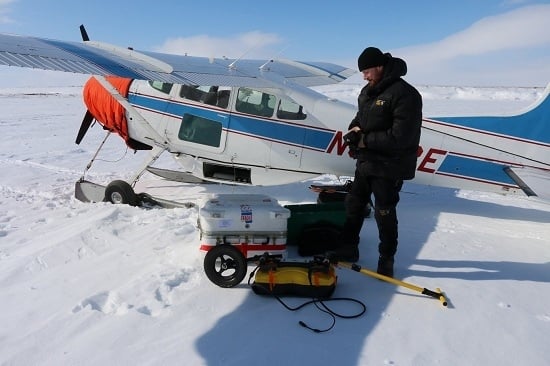Frozen: The Potential and Pitfalls of Ground-Penetrating Radar for Archaeology in the Alaskan Arctic
Abstract
:1. Introduction
Ground-Penetrating Radar (GPR) in Frozen and Partially Frozen Media
2. Methods
3. Results and Discussion
3.1. Dynamics of the Partially Frozen Environment: The Old Whaling Ridge at Cape Krusenstern National Monument
3.1.1. The Old Whaling Site
3.1.2. GPR Investigations at the Old Whaling Site, 2011–2016
3.2. Semi-Subterranean Houses in Partially Frozen Settings: Bering Land Bridge National Preserve and Kobuk Valley National Park
3.2.1. A Birnirk House Complex at Cape Espenberg, Bering Land Bridge National Preserve
3.2.2. A Village Site at Kobuk Valley National Park with an Earlier Site below the Permafrost Table
3.3. Fully Frozen Settings: Bering Land Bridge and Gates of the Arctic
3.3.1. The Bering Land Bridge Mammoth
3.3.2. An Alpine Ice Field in Gates of the Arctic National Park and Preserve
4. Conclusions
- Seasonal changes in the depth and character of the active layer influence the results of GPR surveys. In areas with substantial soil moisture, it may make sense to survey when active layer thickness reaches its seasonal maximum. The ground may be waterlogged, however, and penetration can be ensured by using a moderate antenna frequency as used in the examples shown here. Shortened wavelengths due to the high water content may allow excellent spatial and temporal resolution even with lower antenna frequencies.
- Accurate velocity determinations are critical for estimating both depth and dimensions of archaeological features and are therefore the most crucial parameters to be assessed. In partially frozen substrates, great care should be taken to consider the multiple velocities likely represented in the medium, which may in some cases exhibit extreme shifts, such as when a slow, wet layer is overlying a fast, frozen layer.
- Patterns generated by freeze-thaw processes can be mistaken for cultural features such as house remains. Care should therefore be taken to understand how natural variations within a given survey setting are manifest in GPR data.
- In fully frozen contexts, attenuation is limited and wavelengths are correspondingly increased with velocity. Surveying with higher antenna frequencies than those used for the examples in this paper may be warranted in order to maximize resolution. It must be kept in mind that not all surfaces encountered (e.g., snow) are amenable to the highest antenna frequencies due to difficulty of surface traverse and impracticability of the very closely spaced traverses that might be required to optimize horizontal resolution.
Acknowledgments
Author Contributions
Conflicts of Interest
References
- Urban, T.M. In the footsteps of J. Louis Giddings: Archaeological geophysics in Arctic Alaska. Antiquity 2012, 85, 332. [Google Scholar]
- Urban, T.M.; Anderson, D.D.; Anderson, W.W. Multimethod geophysical investigations at an Inupiaq village in Kobuk Valley, Alaska. Lead. Edge 2012, 31, 950–956. [Google Scholar] [CrossRef]
- Wolff, C.; Urban, T.M. Geophysical analysis at the Old Whaling site, Cape Krusenstern, Alaska, reveals the possible impact of permafrost loss on archaeological interpretation. Polar Res. 2013, 32, 19888. [Google Scholar] [CrossRef]
- Urban, T.M.; Rasic, J.; Buvit, I.; Jacob, R.W.; Richie, J.; Hackenberger, S.; Hanson, S.; Ritz, W.; Wakeland, E.; Manning, S.W. Geophysical investigation of a middle Holocene site on the Yukon River, Alaska. Lead. Edge 2016, 35, 345–349. [Google Scholar] [CrossRef]
- Jacob, R.W.; Urban, T.M. Ground-penetrating radar velocity determination and precision estimates using common-mid-point (CMP) collection with hand-picking, semblance analysis, and cross-correlation analysis: A case study and tutorial for archaeologists. Archaeometry 2015. [Google Scholar] [CrossRef]
- Conyers, L.B. Ground-Penetrating Radar for Archaeology, 3rd ed.; AltaMira Press: Lanham, MD, USA, 2013. [Google Scholar]
- Annan, J.P. Ground Penetrating Radar: Principles, Procedures and Applications; Sensors and Software Inc.: Mississauga, ON, Canada, 2004. [Google Scholar]
- Cross, G.M.; Knoll, M.D. Diffraction-based velocity estimates from optimum offset seismic data. Geophysics 1991, 56, 2070–2079. [Google Scholar] [CrossRef]
- Al Hagrey, S.A.; Müller, C. GPR study of pore water content and salinity in sand. Geophys. Prospect. 2000, 48, 63–85. [Google Scholar] [CrossRef]
- Stolte, C. E-MIGRATION: Image Enhancement for Subsurface Objects of Constant Curvature in Ground Probing Radar Reflection Data. Ph.D. Thesis, Christian-Albrechts-Universität zu Kiel, Kiel, Germany, 1994. [Google Scholar]
- Arcone, S.A.; Delaney, A.J. Dielectric properties of thawed active layers overlying permafrost using radar at VHF. Radio Sci. 1982, 17, 618–626. [Google Scholar] [CrossRef]
- Davis, J.L.; Annan, J.P. Ground penetrating radar for high resolution mapping of soil and rock stratigraphy. Geophys. Prospect. 1982, 37, 531–551. [Google Scholar] [CrossRef]
- Daniels, D.J. Ground Penetrating Radar, 2nd ed.; The Institute of Electrical Engineers: London, UK, 2004. [Google Scholar]
- Goodman, D.; Piro, S. GPR Remote Sensing in Archaeology; Springer: Berlin/Heidelberg, Germany, 2013. [Google Scholar]
- Giddings, J.L. Ancient Men of the Arctic; Knopf, A.A., Ed.; University of Washington Press: Seattle, WA, USA, 1967. [Google Scholar]
- Giddings, J.L.; Anderson, D.D. Beach Ridge Archeology of Cape Krusenstern: Eskimo and Pre-Eskimo Settlements around Kotzebue Sound, Alaska; National Park Service: Washington, DC, USA, 1986.
- Ackerman, R.E. Settlements and sea mammal hunting in the Bering_Chukchi Sea region. Arct. Anthropol. 1988, 25, 52–79. [Google Scholar]
- Dikov, N.N. The oldest sea mammal hunters of Wrangel Island. Arct. Anthropol. 1988, 25, 80–93. [Google Scholar]
- Darwent, J.; Darwent, C.M. The occupational history of the Old Whaling site at Cape Krusenstern. Alask. J. Anthropol. 2005, 3, 135–153. [Google Scholar]
- Mason, O.K.; Gerlach, S.C. The Archaeological Imagination, Zooarchaeological Data, the Origins of Whaling in the Western Arctic, and ‘‘Old Whaling’’ and Choris Cultures. In Hunting the Largest Animals: Native Whaling in the Western Arctic and Subarctic; Studies in Whaling 3, 1_32; McCartney, A.P., Ed.; Canadian Circumpolar Institute: Edmonton, AB, Canada, 1995. [Google Scholar]
- Darwent, C.M. Reassessing the old whaling locality at Cape Krusenstern, Alaska. In Proceedings of the SILA/NABO Conference on Arctic and North Atlantic Archaeology, Copenhagen, Denmark, 10–14 May 2004.
- Selby, M.J. Earth’s Changing Surface: An Introduction to Geomorphology; Oxford University Press: Oxford, UK, 1996. [Google Scholar]
- Hinkel, K.M.; Doolittle, J.A.; Bockheim, J.G.; Nelson, F.E.; Paetzold, R.; Kimble, J.M.; Travis, R. Detection of subsurface permafrost features with ground-penetrating radar, Barrow, Alaska. Permaf. Periglac. Process. 2001, 12, 179–190. [Google Scholar] [CrossRef]
- Munroe, J.S.; Doolittle, J.A.; Kanevskiy, M.Z.; Hinkel, K.M.; Nelson, F.E.; Jones, B.M.; Shur, Y.; Kimble, J.M. Application of ground-penetrating radar imagery for three-dimensional visualisation of near-surface structures in Ice-Rich Permafrost, Barrow, Alaska. Permafr. Periglac. Process. 2007. [Google Scholar] [CrossRef]
- Hoffecker John, F.; Mason, O.K. Human Response to Climate Change at Cape Espenberg: AD 800–1400; University of Colorado: Boulder, CO, USA, 2011. [Google Scholar]
- Alix, C.; Mason, O.K.; Mason Bigelow, N.H.; Anderson, S.L.; Rasic, J.; Hoffecker, J.F. Archéologie du cap Espenberg ou la question du Birnirk et de l’origine du Thule dans le nord-ouest de l’Alaska. Nouv. l’Archéol. 2015, 141, 13–18. [Google Scholar] [CrossRef]
- Darwent, J.; Mason, O.K.; Hoffecker, J.F.; Darwent, C.M. 1000 years of house change at Cape Espenberg, Alaska: A case study in horizontal stratigraphy. Am. Antiq. 2013, 78, 433–455. [Google Scholar] [CrossRef]
- Mason, O.K. Sand ridge stratigraphy of the northern seward peninsula. In Bering Land Bridge National Preserve: An Archeological Survey; National Park Service Resource/Research Management Report AR-14; Schaaf, J., Ed.; U.S. Department of the Interior: Washington, DC, USA, 1988; Volume 1–2, pp. 364–409. [Google Scholar]
- Harritt Roger, K. Eskimo Prehistory on the Seward Peninsula, Alaska; National Park Service Resource/Research Management Report ARORCR/CRR-93/21; U.S. Department of the Interior, Alaska Regional Office: Anchorage, AK, USA, 1994.
- Mason, O.K.; Hopkins, D.M.; Plug, L. Chronology and paleoclimate of storm-induced erosion and episodic dune growth across Cape Espenberg Spit, Alaska, USA. J. Coast. Res. 1997, 13, 770–797. [Google Scholar]
- Schaaf, J. Bering Land Bridge National Preserve: An Archeological Survey; National Park Service Resource/Research Management Report AR-14; U.S. Department of the Interior: Washington, DC, USA, 1988; Volume 1–2.
- Tremayne, A.H. New evidence for the timing of arctic small tool tradition coastal settlement in Northwest Alaska. Alask. J. Anthropol. 2015, 13, 1–18. [Google Scholar]
- Anderson Douglas, D. Prehistory of North Alaska. In Handbook of North American Indians, Volume 5: Arctic; Damas, D., Ed.; Smithsonian Institution Press: Washington, DC, USA, 1984; pp. 80–93. [Google Scholar]
- Ford, J.A. Eskimo prehistory in the vicinity of point Barrow, Alaska. Am. Mus. Nat. Hist. 1959, 47, 1. [Google Scholar]
- Larsen, H.; Rainey, F. Ipiutak and the Arctic Whale Hunting Culture; American Museum of Natural History: New York, NY, USA, 1948. [Google Scholar]
- Giddings, J.L. Arctic Woodland Culture of the Kobuk River; Museum Monographs, The University Museum, University of Pennsylvania: Philadelphia, PA, USA, 1952. [Google Scholar]
- Giddings, J.L. Forest Eskimos; University Museum Bulletin: Philadelphia, PA, USA, 1956. [Google Scholar]
- Giddings, J.L. Kobuk River People; No. 1. College: University of Alaska: Fairbanks, AK, USA, 1961. [Google Scholar]
- Anderson, D.D. Onion Portage: The archaeology of a stratified site from the Kobuk River, Northwest Alaska. Anthropol. Pap. Univ. Alask. 1988, 22, 1–163. [Google Scholar]
- Von Kotzebue, O. A Voyage of Discovery, into the South Sea and Beering’s Straits, for the Purpose of Exploring a North-East Passage, Undertaken in the Years 1815–1818, at the Expense of His Highness Count Romanzoff, in the Ship Rurick, under the Command of the Lieutenant in the Russian Imperial Navy, Otto von Kotzebue; Longman: London, UK, 1821. [Google Scholar]
- Beechey, F.W. Narrative of a Voyage to the Pacific and Beering’s Strait, to Co-Opereate with the Polar Expeditions: Performed in His Majesty’s Ship Blossom, under the Command of Captain F.W. Beechey in the Years 1825, 26, 27, 28; Colburn, H., Bentler, R., Eds.; Cambridge University Press: Cambridge, UK, 1831; Volume 2. [Google Scholar]
- Binford, L.R. Nunamiut Ethnoarchaeology; Academic Press: New York, NY, USA, 1978. [Google Scholar]
- Hare, P.G.; Greer, S.; Gotthardt, R.; Farnell, R.; Bowyer, V.; Schweger, C.; Strand, D. Ethnographic and archaeological investigations of alpine ice patches in Southwest Yukon, Canada. Arctic 2004, 57, 260–272. [Google Scholar] [CrossRef]
- Beattie, O.; Apland, B.; Blake, E.W.; Cosgrove, J.A.; Gaunt, S.; Greer, S.; Mackie, A.P.; Mackie, K.E.; Straathoff, D.; Thorp, V.; et al. The Kwäday Dän Tsínchi Discovery from a Glacier in British Columbia, Candadian. J. Archaeol. 2000, 24, 129–147. [Google Scholar]
- Andrews, T.D.; MacKay, G.; Andrew, L. Archaeological investigations of alpine ice patches in the Selwyn Mountains, Northwest Territories, Canada. Arctic 2012, 65, 1–21. [Google Scholar] [CrossRef]
- Meulendyk, T.; Moorman, B.J.; Andrews, T.D.; MacKay, G. Morphology and development of ice patches in Northwest Territories, Canada. Arctic 2012, 65, 43–58. [Google Scholar] [CrossRef]
- Dixon, E.J.; Manley, W.F.; Lee, C.M. The Emerging archaeology of glaciers and ice patches: Examples from Alaska’s Wrangell-St. Elias National Park and Preserve. Am. Antiq. 2005, 70, 129–143. [Google Scholar] [CrossRef]
- Vander Hoek, R.; Wygal, B.; Tedor, R.M.; Holmes, C. Survey and monitoring of ice patches in the Denali highway region, Central Alaska, 2003–2005. Alask. J. Anthropol. 2007, 5, 67–86. [Google Scholar]
- Lee, C.M. Withering snow and ice in the mid-latitudes: A new archaeological and paleobiological record for the Rocky Mountain region. Arctic 2012, 65, 165–177. [Google Scholar] [CrossRef]
- Grosjean, M.; Suter, P.J.; Trachsel, M.; Wanner, H. Ice-borne prehistoric finds in the Swiss Alps reflect Holocene glacier fluctuations. J. Quat. Sci. 2007, 22, 203–207. [Google Scholar] [CrossRef]
- Farnell, R.; Hare, P.G.; Blake, E.; Bowyer, V.; Schweger, C.; Greer, S.; Gotthardt, R. Multidisciplinary investigations of alpine ice patches in Southwest Yukon, Canada: Paleoenvironmental and paleobiological investigations. Arctic 2004, 57, 247–259. [Google Scholar] [CrossRef]
- Bjork, R.G.; Molau, U. Ecology of alpine snowbeds and the impact of global change. Arct. Antarct. Alp. Res. 2007, 39, 1. [Google Scholar] [CrossRef]
- Martín-Español, A.; Lapazaran, J.J.; Otero, J.; Navarro, F.J. On the errors involved in ice-thickness estimates III: Error in volume. J. Glaciol. 2016. [Google Scholar] [CrossRef]
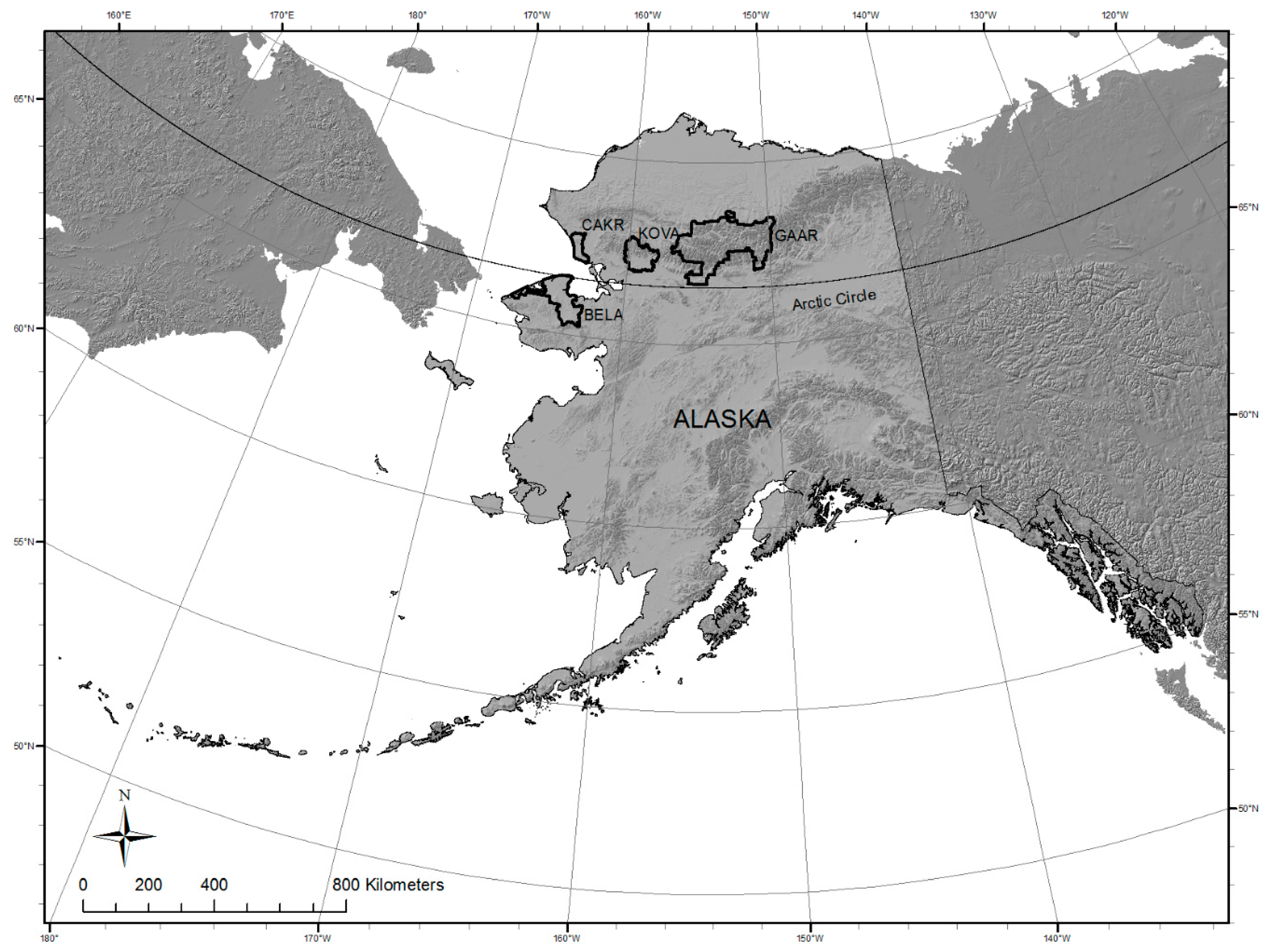
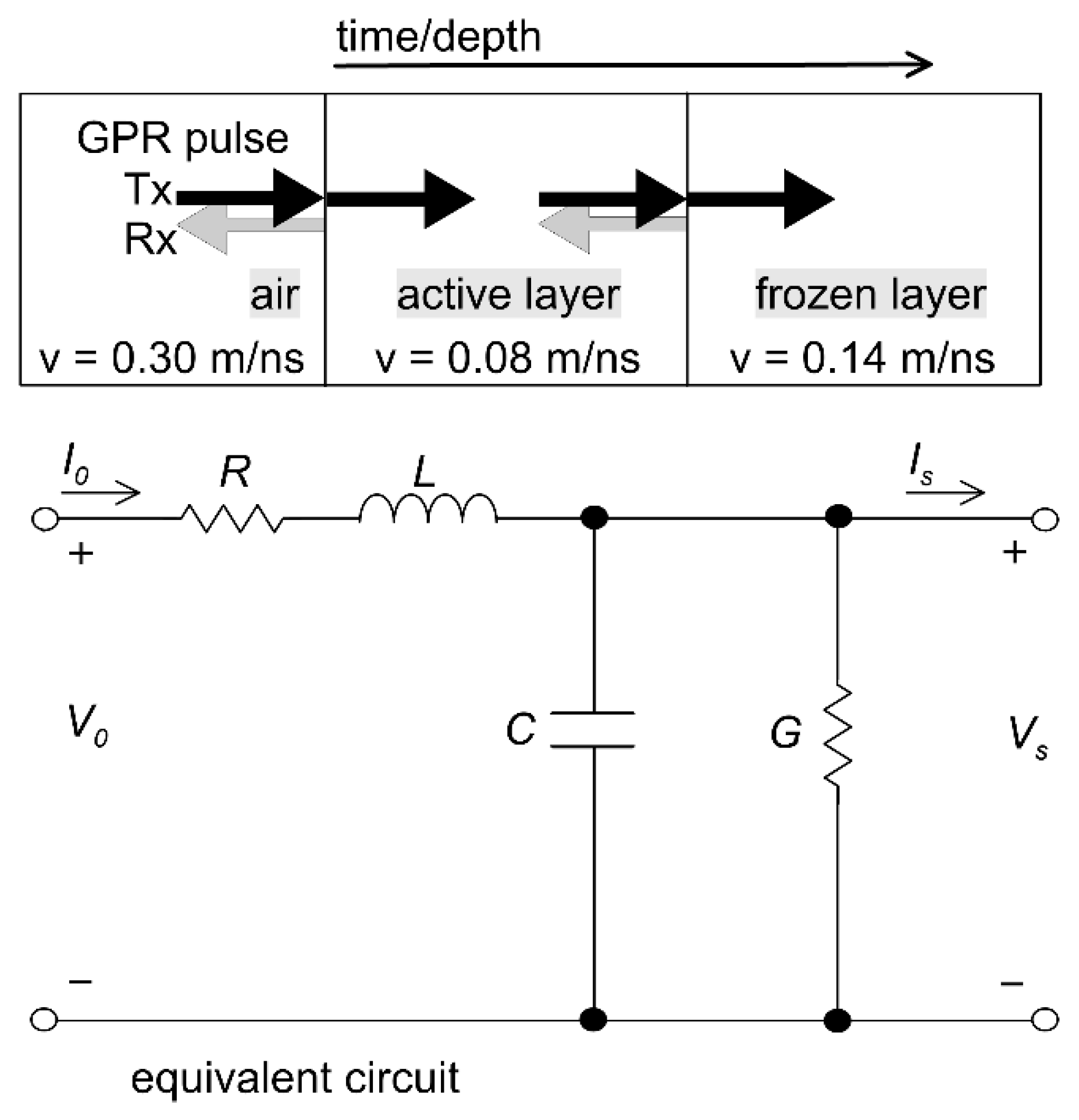
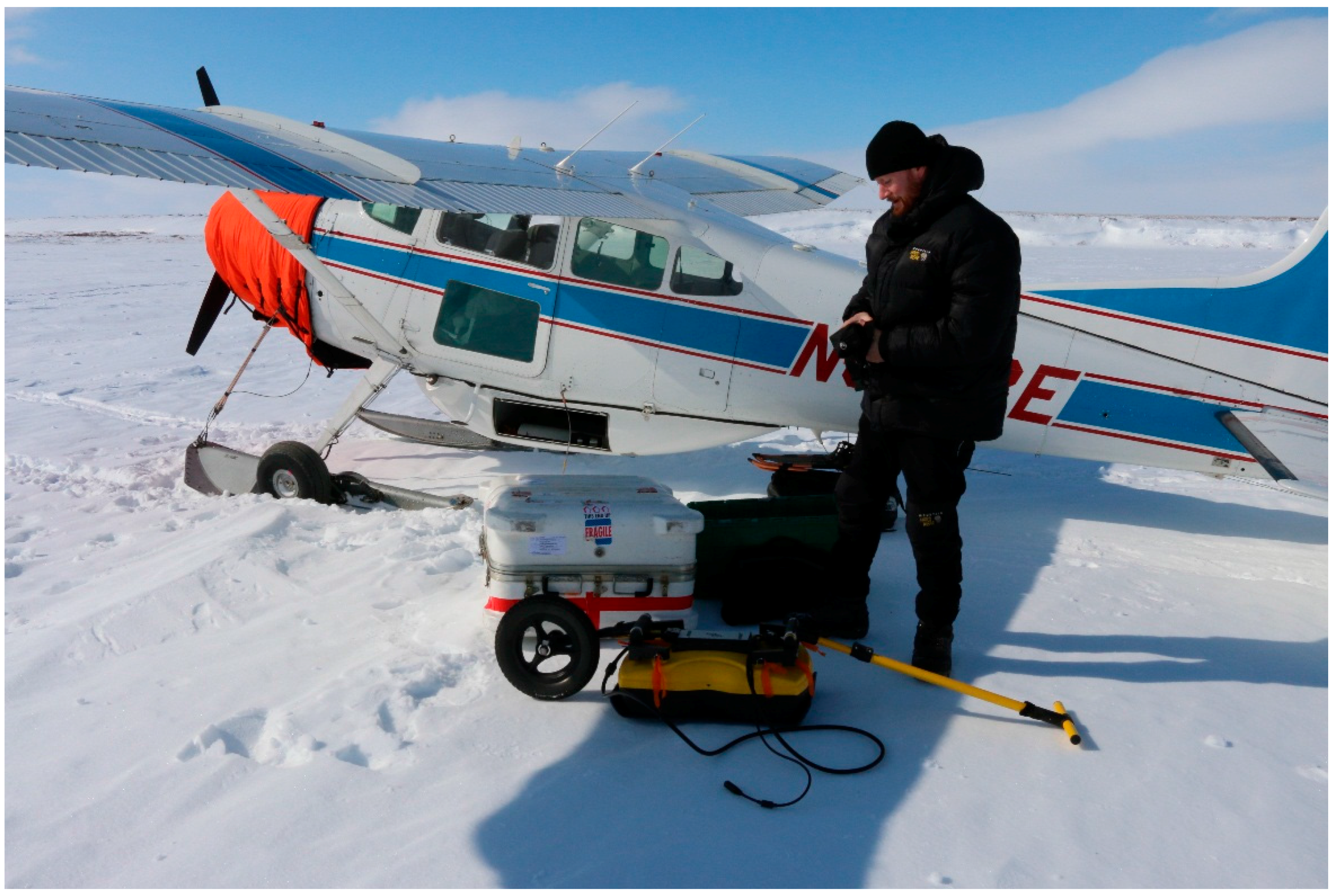
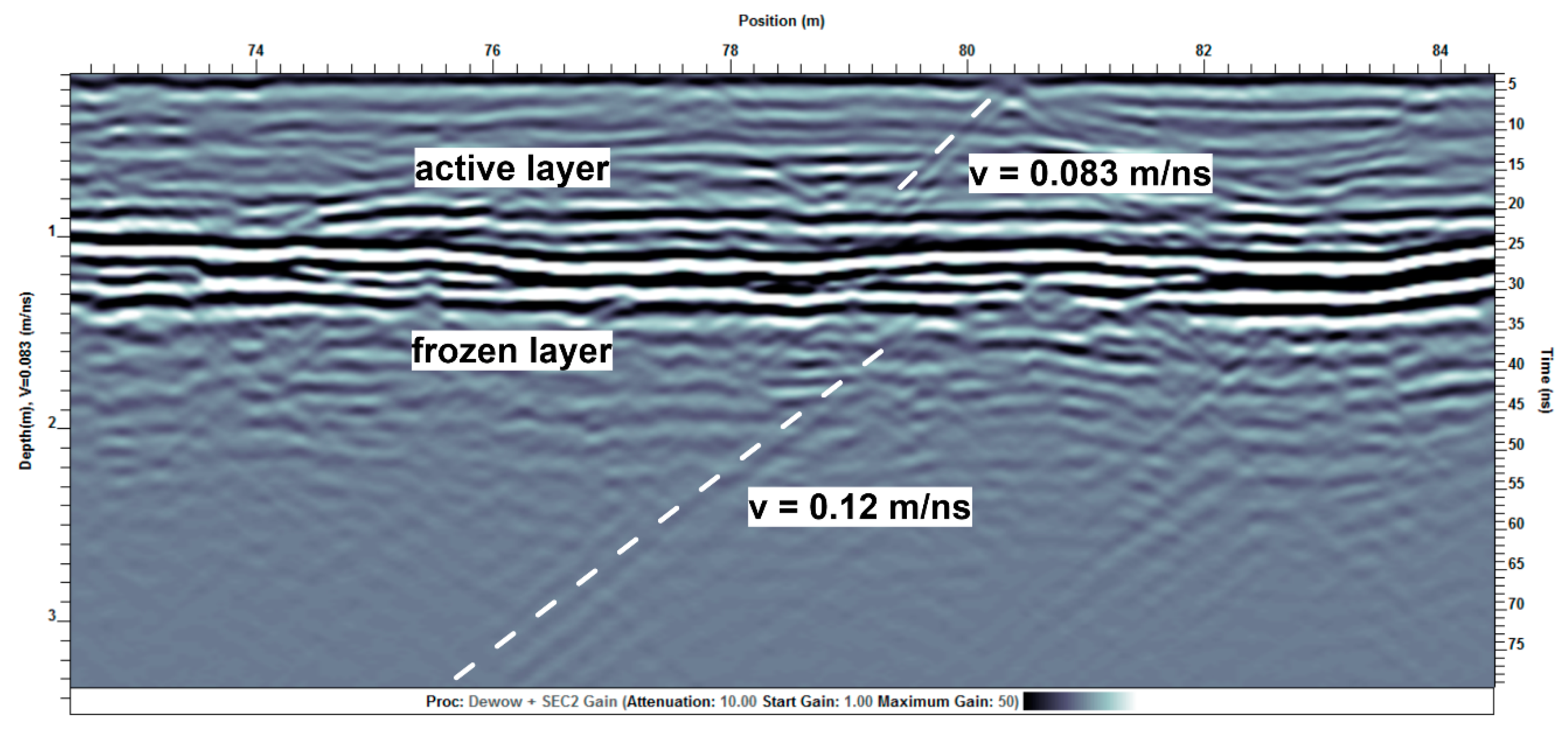

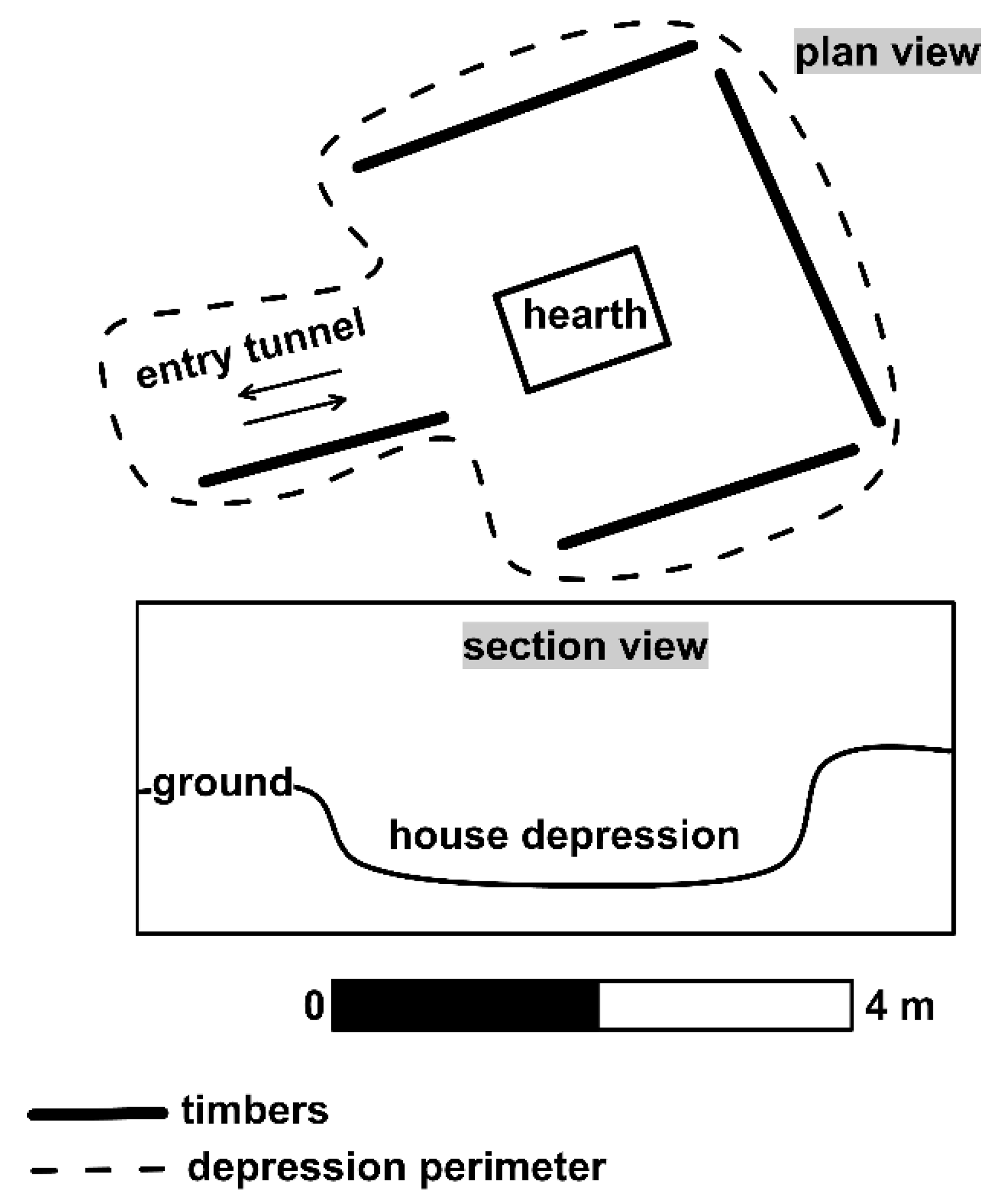
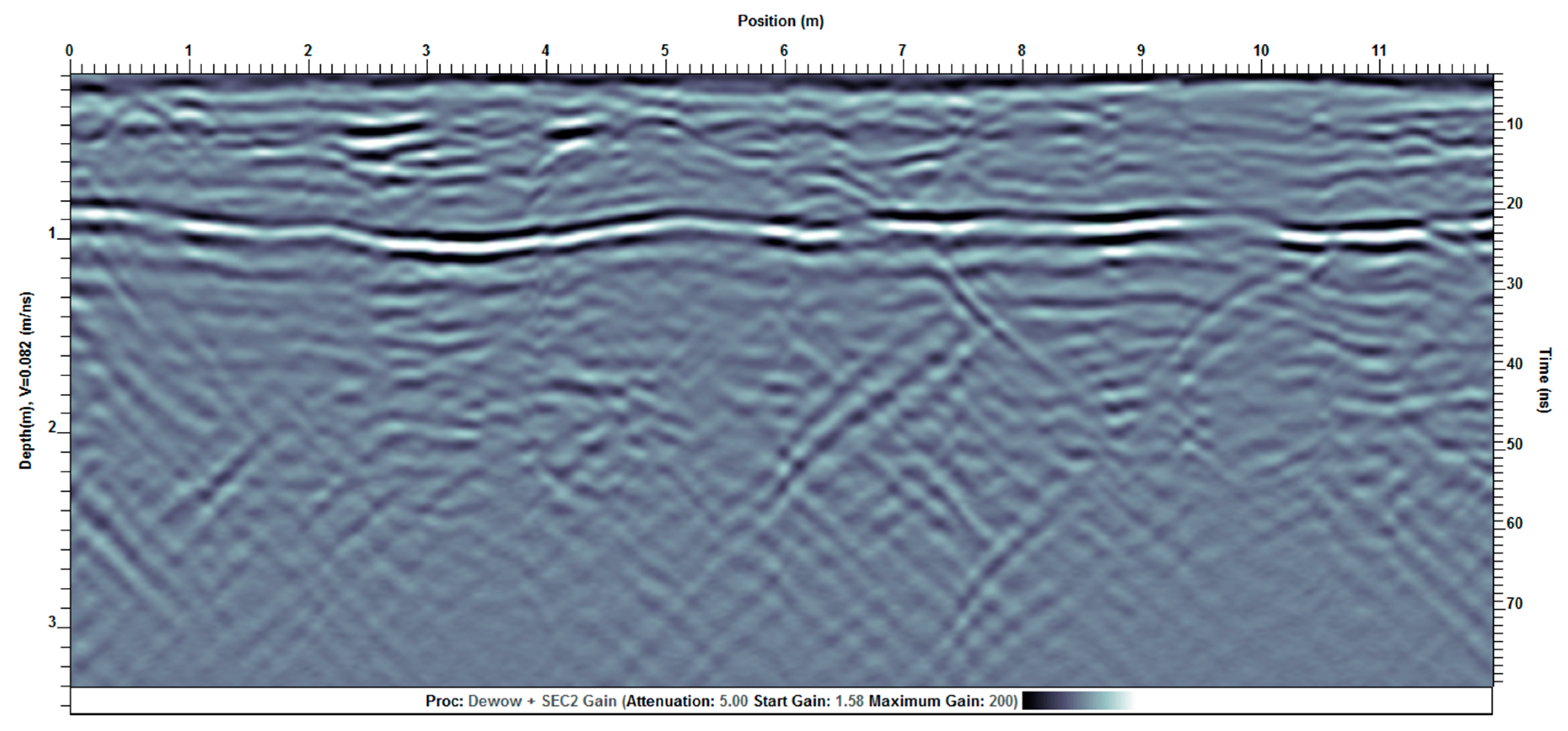
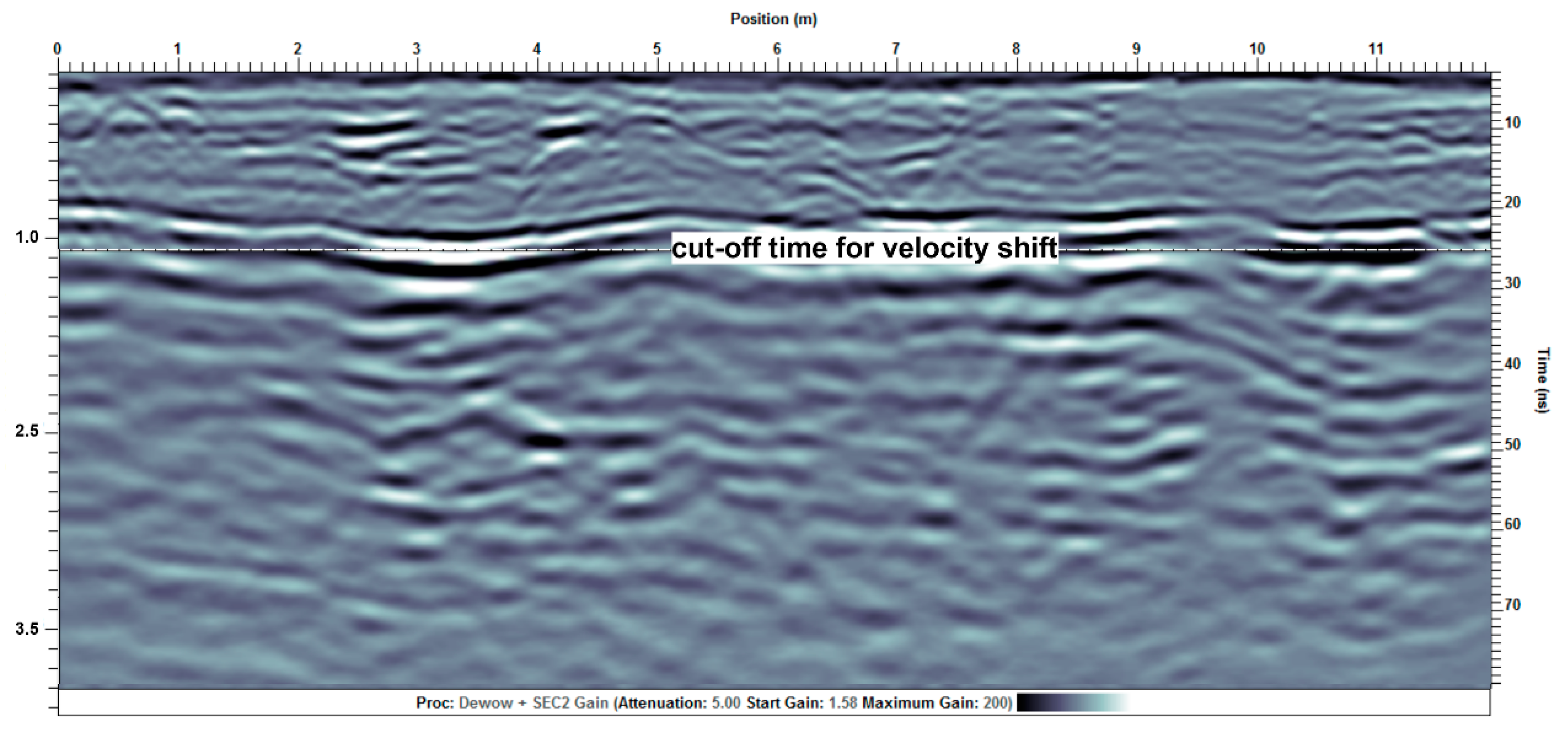
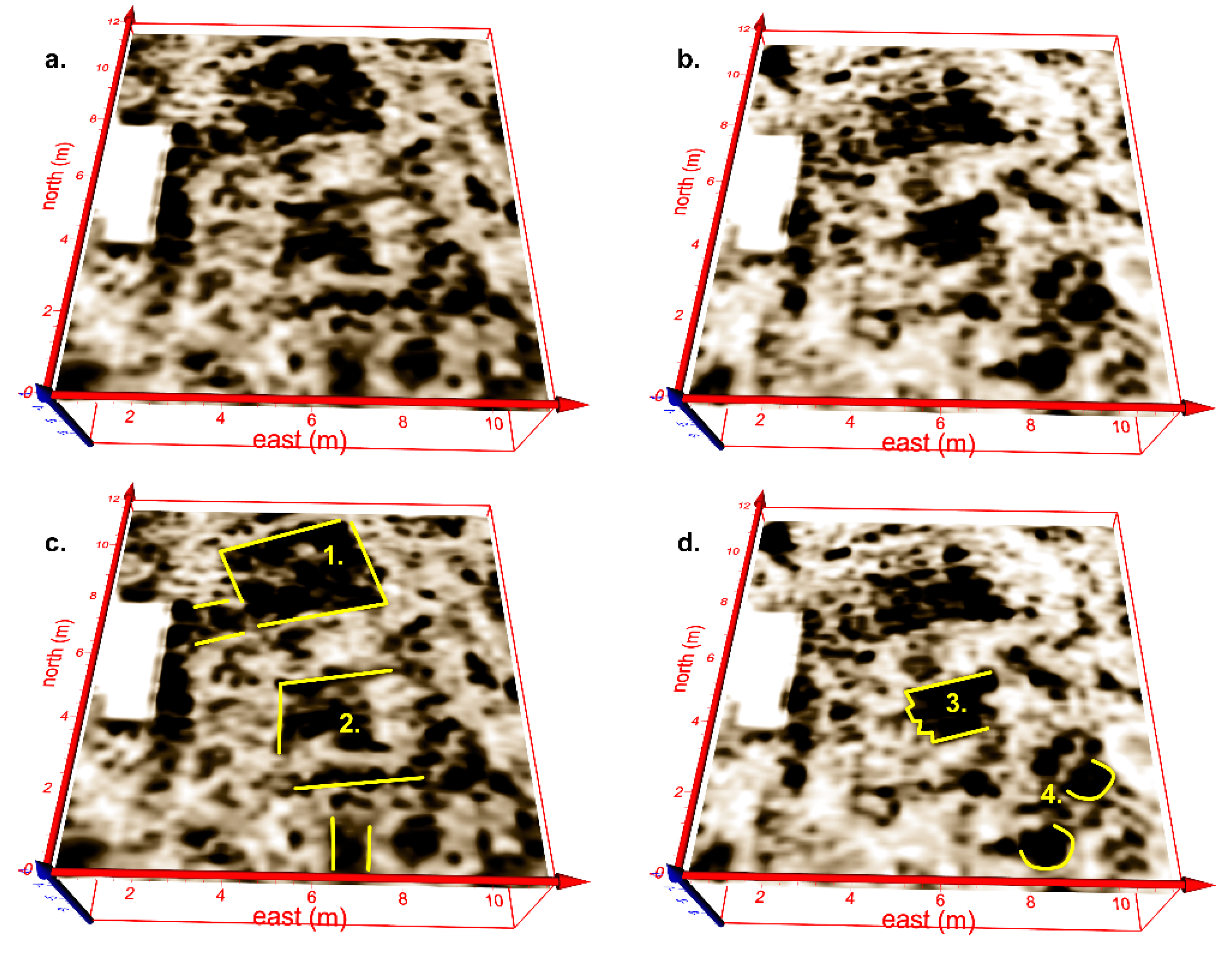

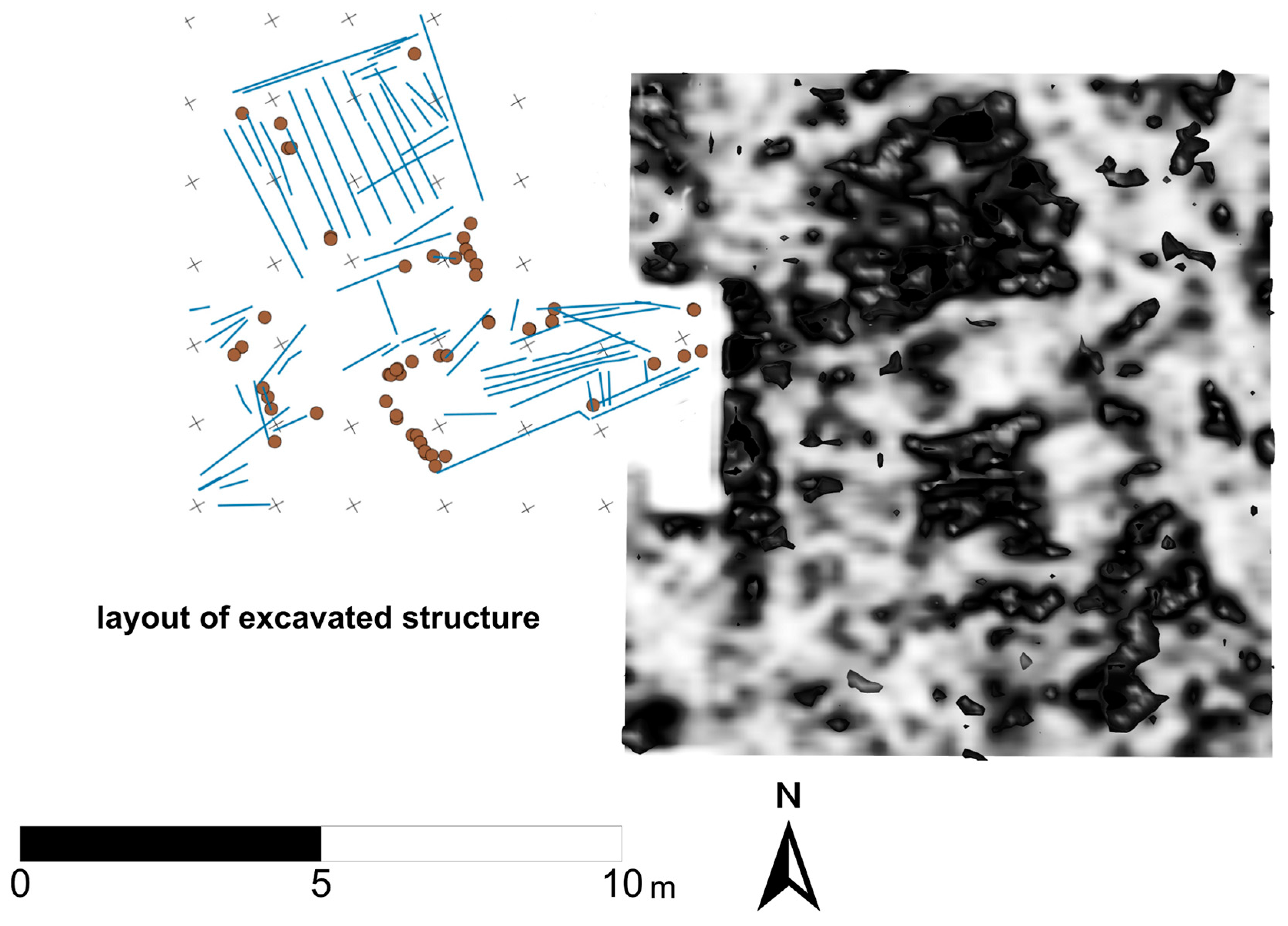
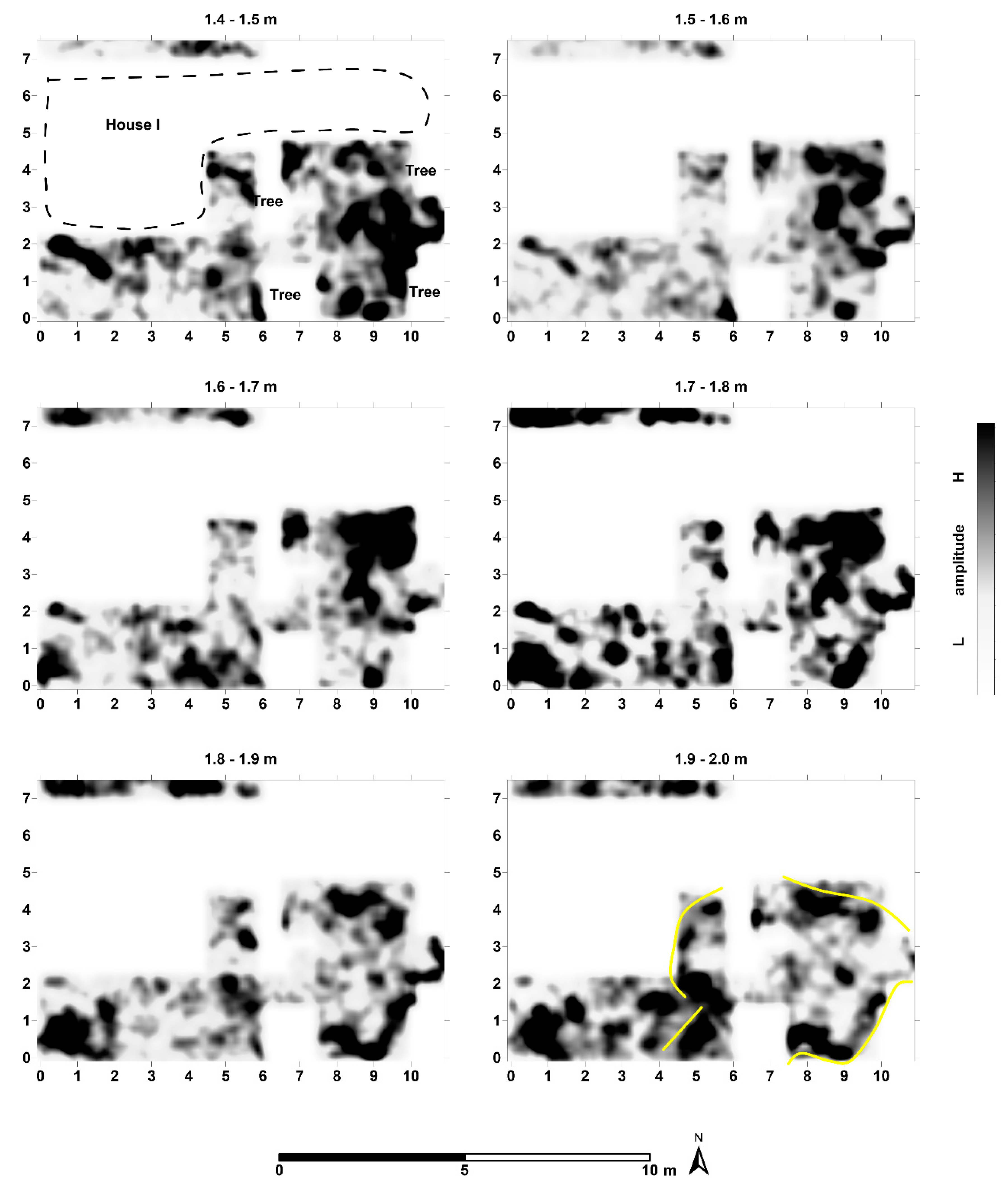

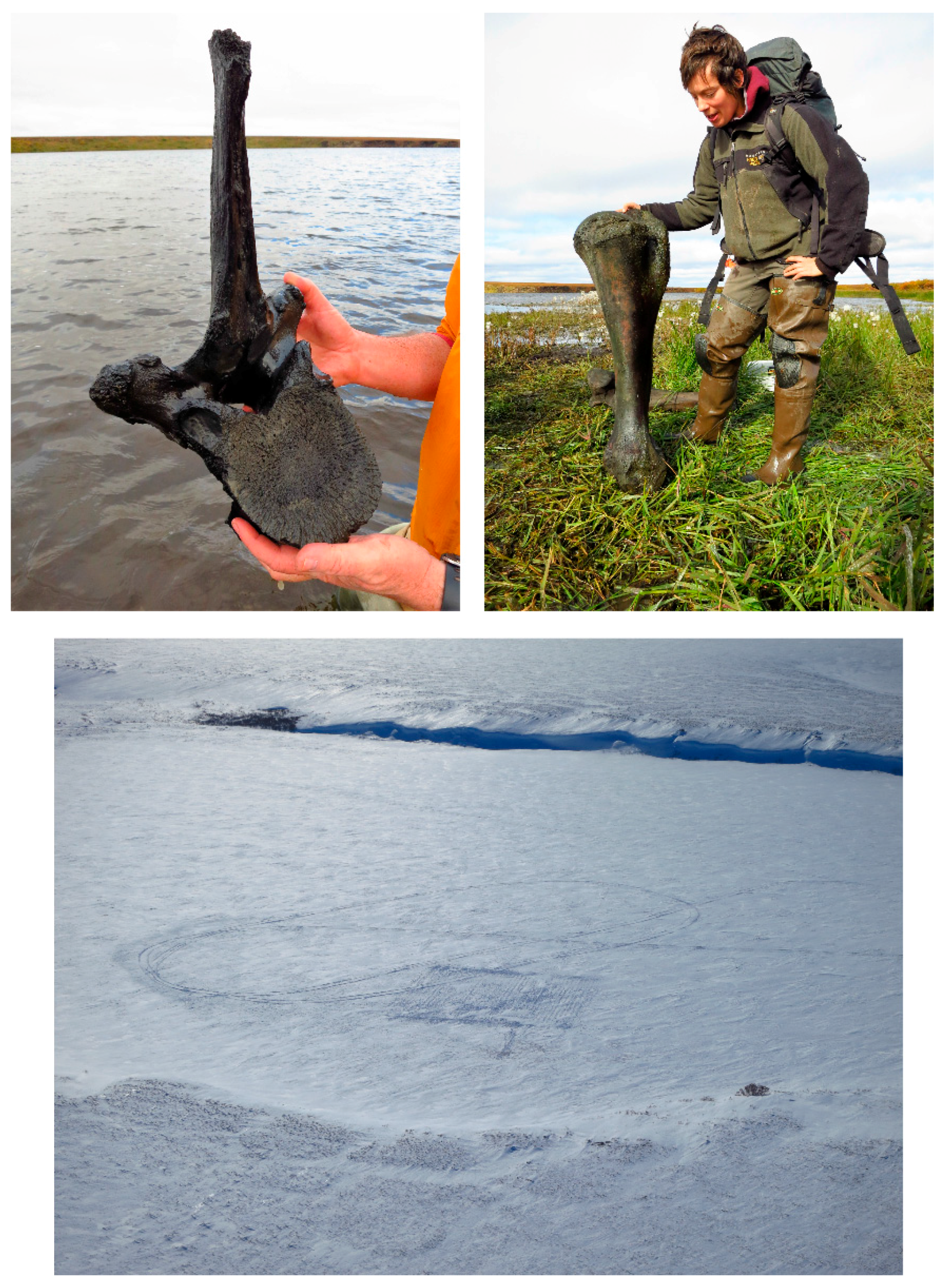
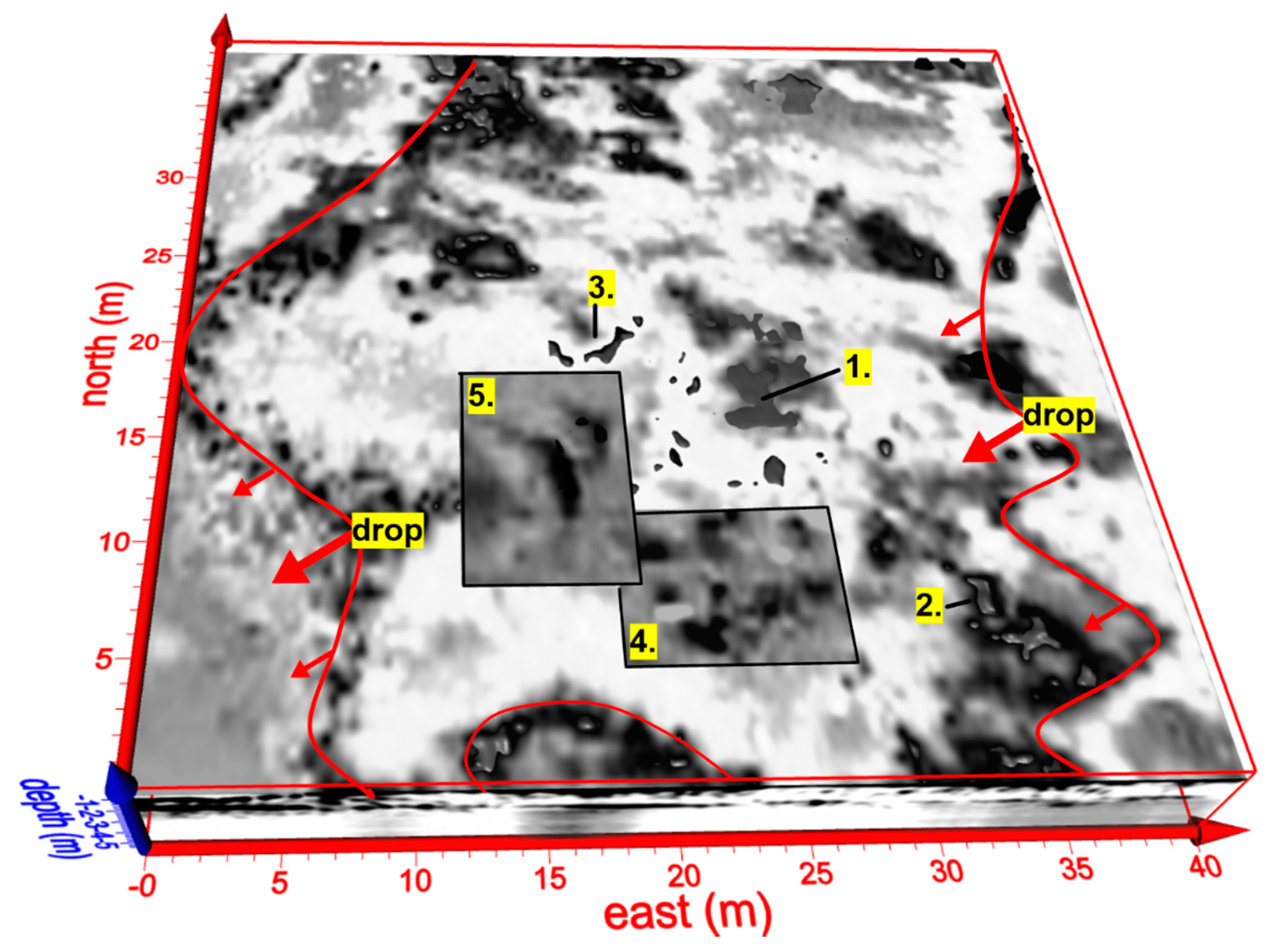
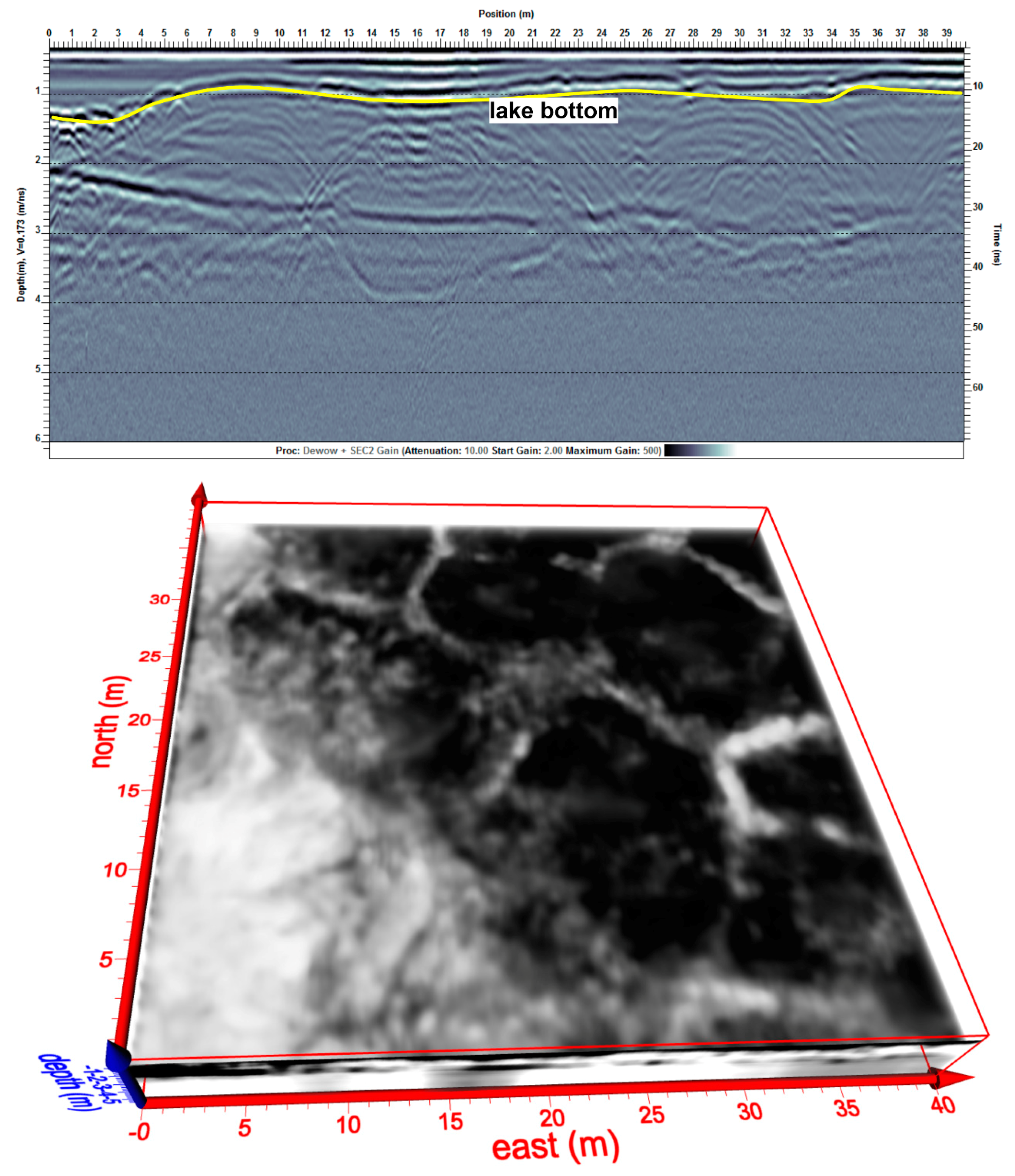
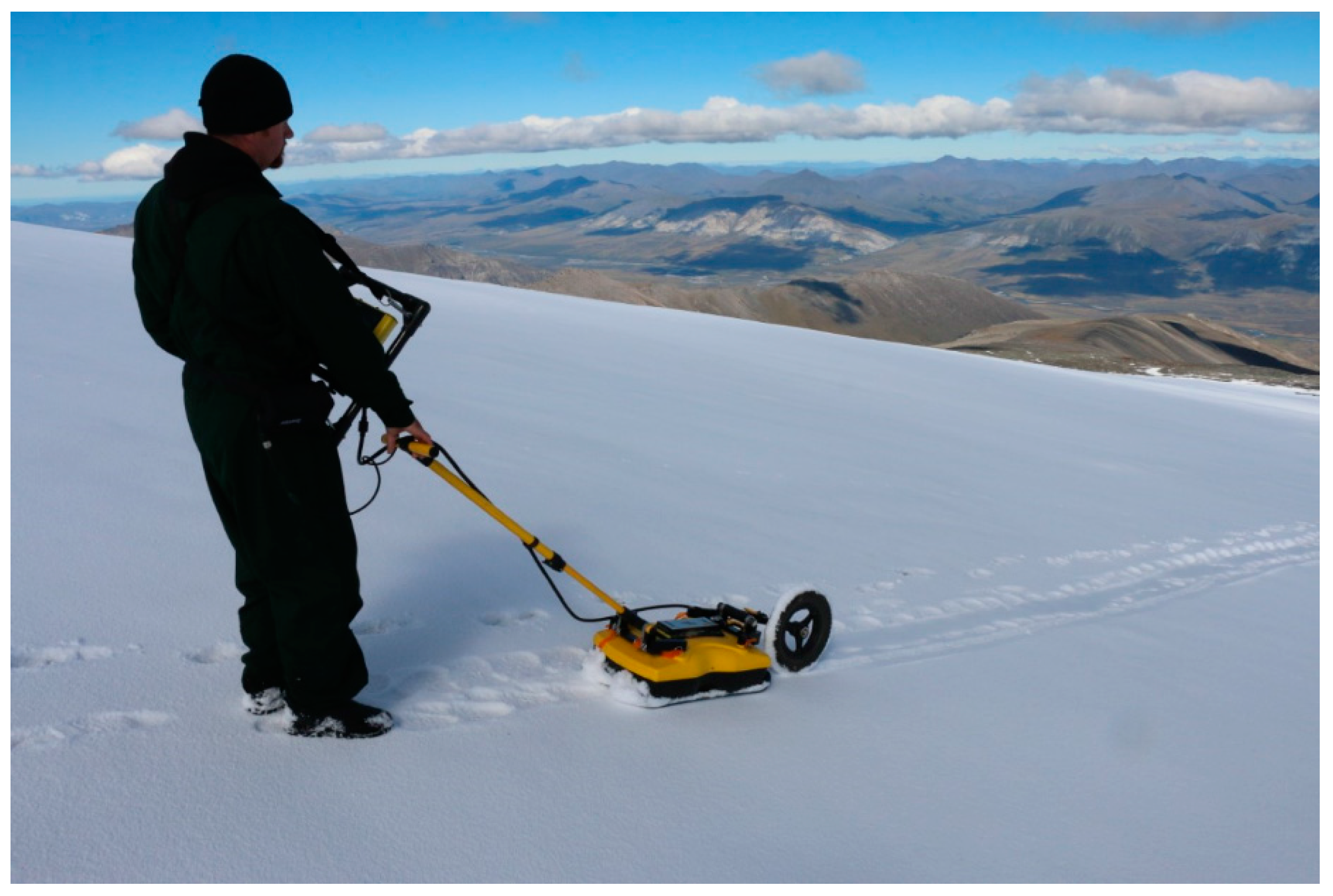
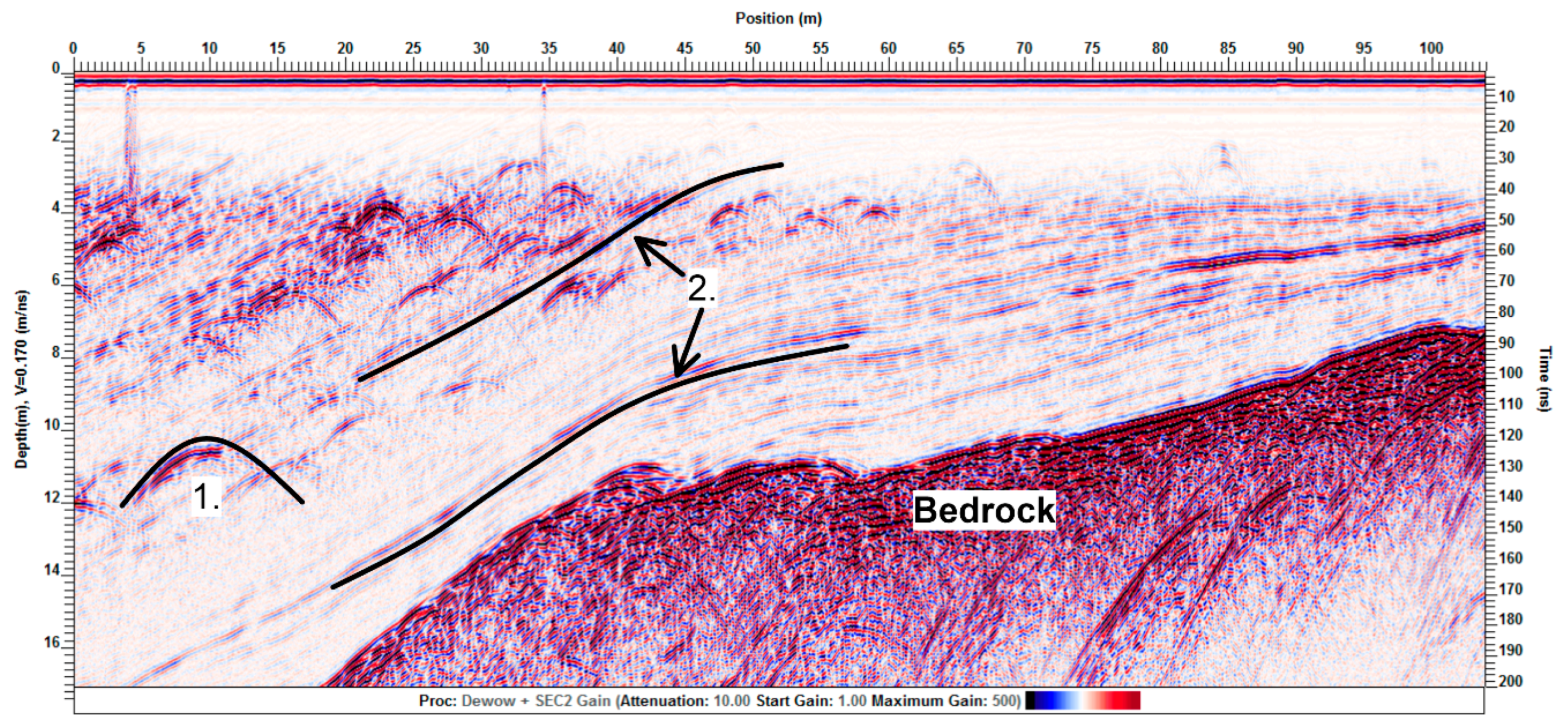
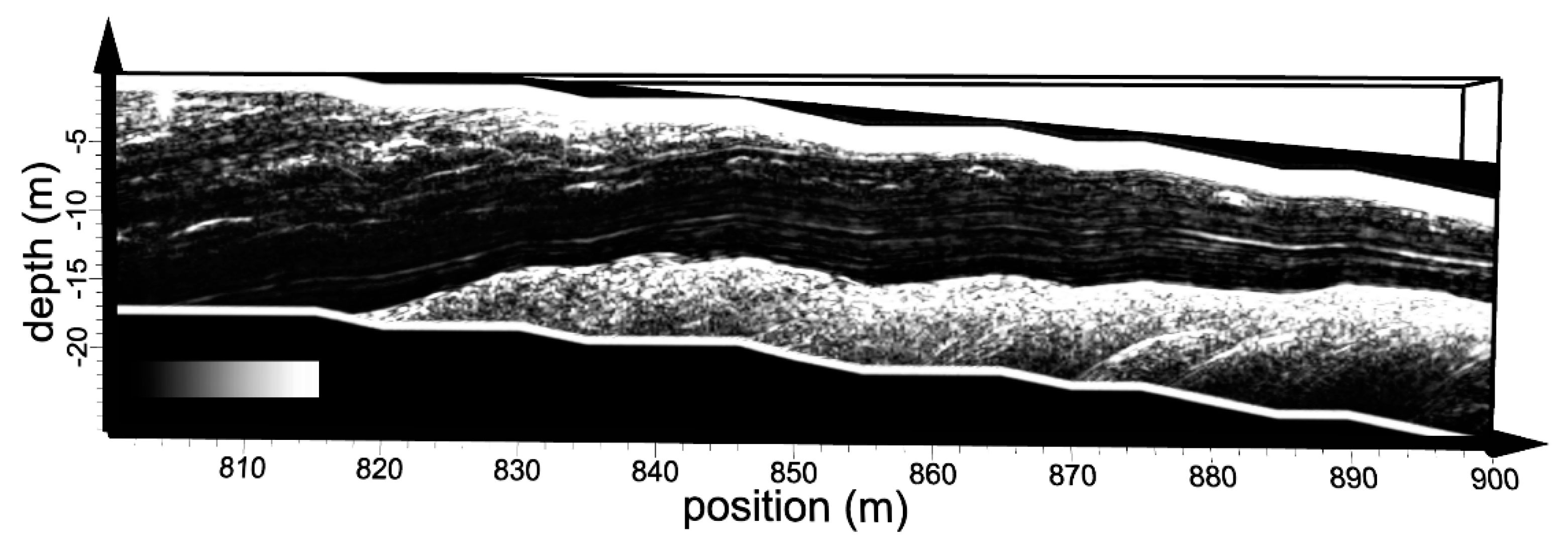
| Material | Velocity (m/ns) |
|---|---|
| Air | 0.3 |
| Snow | 0.2 |
| Cold ice | 0.16–0.18 |
| Temperate ice | 0.15 |
| Permafrost | 0.12–0.14 |
| Dry gravel | 0.12 |
| Wet gravel | 0.10 |
| Silt (wet) | 0.07 |
| Clay (wet) | 0.06 |
| Fresh water | 0.033 |
| Parameter | |
|---|---|
| Gridded traverse | (varied) anti-parallel, sometimes bi-directional |
| Transect interval | (varied) 0.20–0.5 m |
| Trace interval | 0.05 m |
| Tx-Rx offset | 0.279 m |
| Time window | (varied) 80–200 ns |
| Stacks | 8 per station |
© 2016 by the authors; licensee MDPI, Basel, Switzerland. This article is an open access article distributed under the terms and conditions of the Creative Commons Attribution (CC-BY) license (http://creativecommons.org/licenses/by/4.0/).
Share and Cite
Urban, T.M.; Rasic, J.T.; Alix, C.; Anderson, D.D.; Manning, S.W.; Mason, O.K.; Tremayne, A.H.; Wolff, C.B. Frozen: The Potential and Pitfalls of Ground-Penetrating Radar for Archaeology in the Alaskan Arctic. Remote Sens. 2016, 8, 1007. https://doi.org/10.3390/rs8121007
Urban TM, Rasic JT, Alix C, Anderson DD, Manning SW, Mason OK, Tremayne AH, Wolff CB. Frozen: The Potential and Pitfalls of Ground-Penetrating Radar for Archaeology in the Alaskan Arctic. Remote Sensing. 2016; 8(12):1007. https://doi.org/10.3390/rs8121007
Chicago/Turabian StyleUrban, Thomas M., Jeffrey T. Rasic, Claire Alix, Douglas D. Anderson, Sturt W. Manning, Owen K. Mason, Andrew H. Tremayne, and Christopher B. Wolff. 2016. "Frozen: The Potential and Pitfalls of Ground-Penetrating Radar for Archaeology in the Alaskan Arctic" Remote Sensing 8, no. 12: 1007. https://doi.org/10.3390/rs8121007




